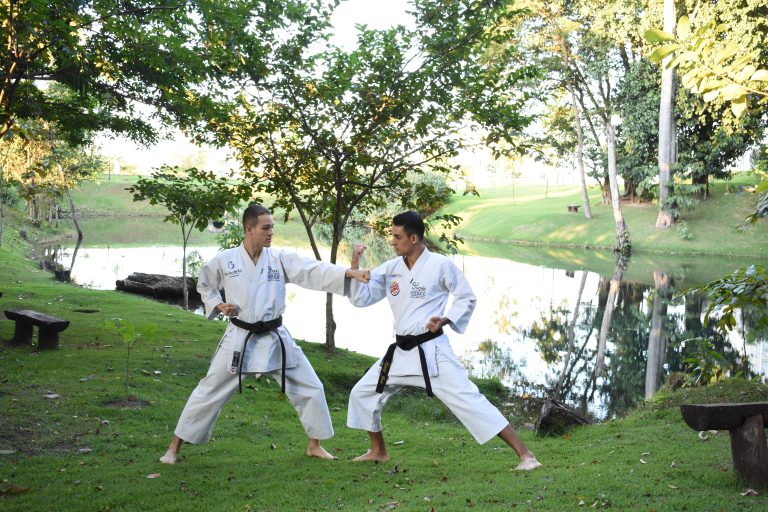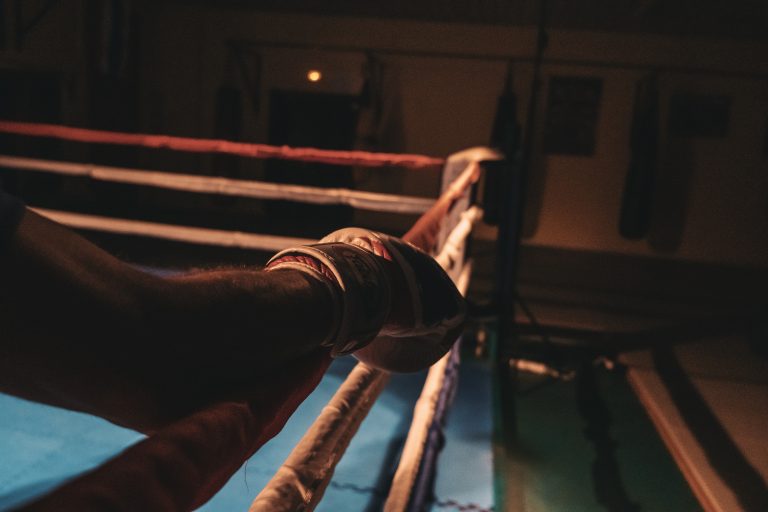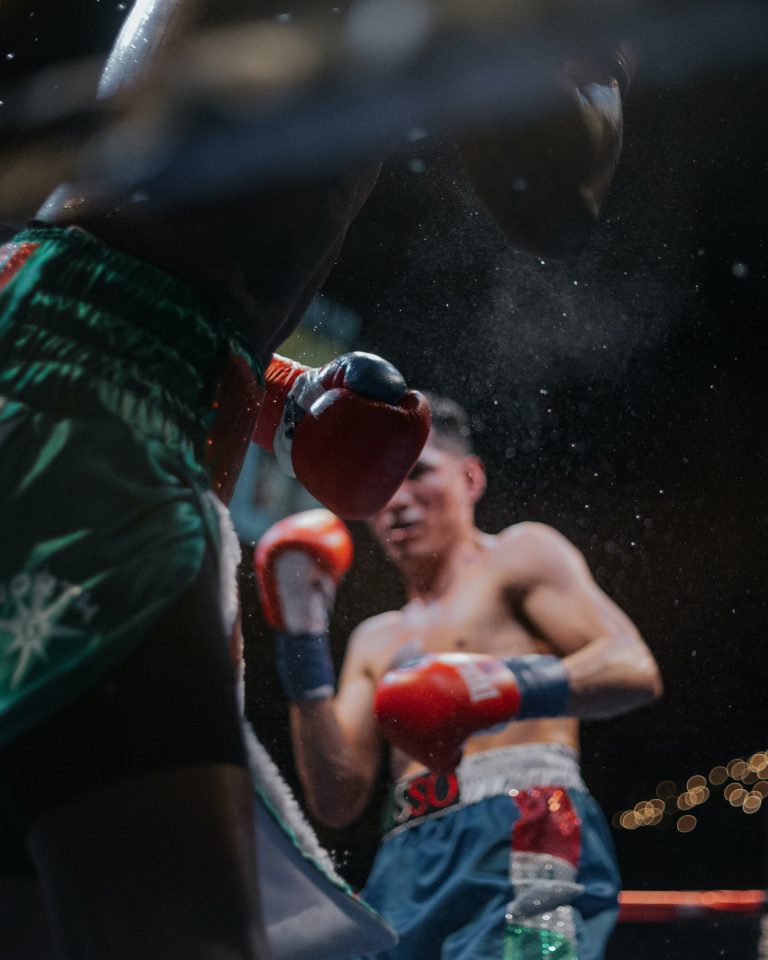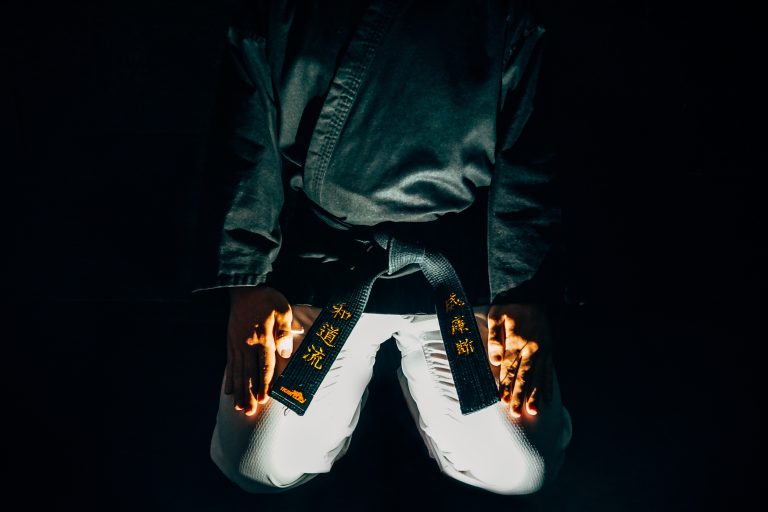Colors of Karate Belts in Order: Understanding the Ranking System
Karate is a martial art that involves different levels of proficiency. When practicing karate, students work their way up through the ranks by learning new techniques and mastering different forms of attack and defense. One way that students are recognized for their progress is through the use of colored belts. In this article, we’ll take a look at the colors of karate belts in order, and what each color signifies.
The Significance of Belt Colors in Karate
The colored belts used in karate signify the rank and skill level of the practitioner. These belts are awarded to a student as he or she progresses through the different stages. The progression is usually divided into several levels, with each level signifying a new set of skills and a higher degree of proficiency.
The colors of the belts are often associated with different meanings. Here is a brief guide to the colors of karate belts in order and what they represent:
White Belt
The white belt is the starting point for all karate students. It signifies the beginning of the journey towards mastery of the art. The white belt represents a blank slate, indicating that the student has no knowledge about karate yet.
Orange Belt
The first colored belt is the orange belt. This signifies that the student has gained some knowledge and experience in the art of karate. The color orange represents the dawn of a new day with new goals.
Green Belt
The green belt signifies an advancement in the student’s skill level. This color represents growth and development. The student has learned the fundamental techniques of karate and is developing his or her own style.
Blue Belt
The blue belt represents the sea and the sky. This signifies the expansion of the student’s knowledge and an increase in skill level. The student has a deeper understanding of karate and is working towards mastering the art.
Purple Belt
The purple belt in karate signifies peace, harmony and stability. The student has reached an advanced level and has acquired a great degree of skill and knowledge in the art of karate.
Brown Belt
The brown belt represents the earth and symbolizes the student’s grounding in the art of karate. This level requires an exceptional amount of dedication, skill, and patience. A brown belt indicates that the student is a serious practitioner of karate and is nearing the highest levels of proficiency.
Black Belt
The black belt is the highest level of proficiency in karate. It signifies the student’s mastery of the art and is the ultimate goal for most practitioners of karate. The black belt is often seen as the beginning rather than the end of the student’s journey in the art of karate, as there is still much to learn and master.
Frequently asked questions about the colors of Karate belts in order
Karate is a martial art that is practiced for self-defense and physical fitness. It promotes discipline and respect, and, like many martial arts, uses a system of colored belts to indicate rank and progression. In this blog post, we’ll answer some frequently asked questions about the colors of Karate belts in order.
1. What do the colors of Karate belts represent?
Each color of Karate belt represents a different level of expertise and skill. The colors are like a ladder of progression, with each step indicating that the student has learned and improved in their technique and knowledge of Karate. The typical order of the colors of Karate belts in order, from beginner to advanced, is white, yellow, orange, green, blue, purple, brown, and black.
2. Why is white the first belt color in Karate?
White is the first belt color in Karate because it represents purity and innocence. White is considered a color of humility and shows that the student has just begun to learn about Karate. The white belt is also often seen as a blank slate indicating that there is a lot to learn, and it is the foundation for all other Karate belt colors.
3. How long does it take to progress from white belt to black belt?
The time it takes to progress from white belt to black belt can vary depending on the individual’s dedication, skill, and the specific Karate school they attend. Generally, it takes between 3 to 5 years of consistent practice to reach the black belt level. However, some highly dedicated students can achieve their black belt in as little as 2 years, while others may take more than 10 years.
4. Is there a difference between the colors of Karate belts in different schools?
The order of the colors of Karate belts is usually consistent across Karate schools, but there can be some minor variations in the shades of the belt colors or the stripes or markings used to denote progress within each belt color. Different Karate schools may also have different requirements for students to earn each belt color.
5. What do the stripes on Karate belts mean?
Some Karate schools use stripes on belts to represent a student’s progress within a specific belt color. For example, a yellow belt with one stripe might indicate that the student is midway through the yellow belt level, while a yellow belt with two stripes might indicate that the student is almost ready to test for their next promotion. Other schools do not use stripes as part of their Karate belt color system.
6. Can you skip a Karate belt color?
It is uncommon to skip a Karate belt color, as each belt color represents a specific level of knowledge and skill. However, some schools may allow students who have exceptional skills or knowledge to progress more quickly through the ranks, which may result in skipping a belt color. Skipping a belt color is not a common practice and should not be expected.
7. Are there any additional colors of Karate belts?
While the traditional Karate color system includes white, yellow, orange, green, blue, purple, brown, and black belts, some schools or organizations may use additional colors to indicate progress beyond black belt. These additional belts are not typically recognized as part of the traditional Karate system and can vary in color, name, and requirements.
In conclusion, understanding the colors of Karate belts in order is an important aspect of learning and practicing Karate. Each color represents a different level of skill and knowledge, and the order of the colors is typically consistent across Karate schools. While there may be some minor variations between schools, the belt color system is a useful tool for tracking progress and providing motivation for students to continue their Karate practice.
Colors of Karate Belts in Order: A Step-by-Step Guide
Karate is a Japanese martial art that is practiced by people all around the globe. One of the most recognizable aspects of karate is the colored belts, which signify a practitioner’s level of skill and experience.
If you’re a beginner in karate, it can be confusing to understand the different colors of belts and the order they follow. In this step-by-step guide, we’ll break down the colors of karate belts in order and explain everything you need to know.
Step 1: Understanding the Belt System
Before we dive into the different colors of karate belts, it’s crucial to understand how the belt system works. The belt system in karate starts with white and ends with black. Each belt color represents a level of proficiency in the art, with black belt being the most advanced level.
In karate, there are usually nine or ten belt colors depending on the style of karate. The different colors signify various milestones in a practitioner’s journey towards mastery. As you progress through the colored belts, you’ll gain knowledge, experience, and skill which are demonstrated through your proficiency in katas, techniques, and sparring.
Step 2: The Colors of Karate Belts in Order
Now that you have an understanding of how the belt system works let’s dive into the colors of karate belts in order:
1. White Belt: The white belt is the starting point for all karateka, and it signifies a beginner’s innocence. The white belt represents a new beginning in the journey of karate.
2. Yellow Belt: The yellow belt represents the color of sunlight that illuminates the path to knowledge. It signifies that the student has made a significant progress in their journey towards mastering the basics of the karate art.
3. Orange Belt: The orange belt represents the color of the sunrise, which signifies a new day of learning, experience, and knowledge.
4. Green Belt: The green belt represents the color of the growing plant, which reflects the growth of the practitioner’s skills, techniques, and knowledge.
5. Blue Belt: The blue belt represents the calmness of the ocean, which stands for the increased depth of the practitioner’s knowledge and experience.
6. Purple Belt: The purple belt represents the color of the twilight sky, which stands for the transition of the practitioner from a beginner to a more advanced level.
7. Brown Belt: The brown belt signifies the color of the earth and reflects the practitioner’s stability and rootedness in the karate art.
8. Black Belt: The black belt represents mastery, and it signifies the ability of the practitioner to teach karate to others.
Step 3: Graduation Criteria
To progress from one belt color to another, a karateka has to meet the graduation criteria for that level. The requirements for graduation differ depending on the karate style and school. Typically, to advance to the next level, a practitioner has to demonstrate proficiency in kata, kumite, and techniques of the previous belt.
In some schools, a written examination is also part of the graduation criteria. The examination can include topics such as the history of karate, techniques, and principles of the art, among others.
Step 4: Conclusion
The colored belts in karate are a significant aspect of the art, and they signify the practitioner’s level of proficiency and experience. Learning and practicing karate is a journey that requires dedication, discipline, and focus.
With this guide, you now understand the order of the colors of karate belts and what each color signifies. Remember that progress in karate can take time, so be patient and enjoy the journey. With dedication and persistence, you too can earn the coveted black belt and master the art of karate.
Inhaltsverzeichnis






